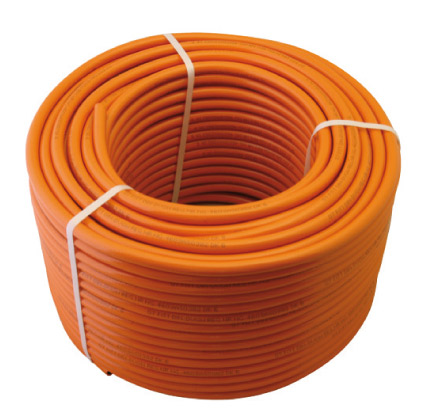Hose for LPG realized according to the EN ISO 3821 standard
Characteristics of the hose for LPG laid down by the ISO 3821 standard relating to welding equipment
 Within the Gnali Bocia catalog there is a wide range of LPG hoses that directly refer to the EN ISO 3821 standard. This standard, which replaced the previous EN 599, specifies the construction requirements for rubber hoses intended for welding, cutting and other related activities. In particular, the conducted fluids must have a pressure lower than 2 MPa and an operating temperature between -20 and 60 ° C.
Within the Gnali Bocia catalog there is a wide range of LPG hoses that directly refer to the EN ISO 3821 standard. This standard, which replaced the previous EN 599, specifies the construction requirements for rubber hoses intended for welding, cutting and other related activities. In particular, the conducted fluids must have a pressure lower than 2 MPa and an operating temperature between -20 and 60 ° C.Compliance with the legislation guarantees safety in the use of LPG hoses and it is important to remember that the rubber hoses for these applications must always be checked by an external body: this requirement is fundamental for the marketing of the components.
The legislation prescribes some important rules in terms of:
- Hose coloring: essential for visual identification and correct coupling;
- Marking: provides the main information regarding the component and must be replaced at least once every 1000 mm of pipe.
The coloring
As mentioned, the EN ISO 3821 standard accurately exposes the details related to the paste coloring of rubber hoses. In particular, the distinction is made, on the basis of the fluid conveyed, between:- Red: used for acetylene and other combustible gases;
- Blue: used for oxygen and for mixtures containing oxygen;
- Black: used for air, inert gases (argon), nitrogen and carbon dioxide;
- Orange: used for LPG or natural gas.
Therefore, the rubber hoses for LPG must be made in orange color.
The marking
Another fundamental aspect, as mentioned above, is the marking of the tube. It consists of five fields necessary for identification:1. The number of the reference legislation;
2. The maximum operating pressure in MPa and, in parentheses, in bar;
3. The measure of the nominal diameter of the hose;
4. Name and brand of the manufacturer and distributor;
5. The year the hose was made.
An example of marking can be: ISO 3821-MPa (20 bar) - 6 - Gnali Bocia - 20.
During the time, how long can an LPG hose last?
It is important to note that the legislation does not prescribe a maximum life of the LPG hose as it cannot be estimated in advance without considering the operating conditions and the environment in which it operates.This, in any case, does not mean that there are no common sense rules to follow for the safety and efficiency of these components. Among these, it is worth mentioning:
- Annual visual inspection to check the integrity of the hose;
- Testing and revision carried out either by the manufacturer or by highly specialized personnel for this type of product;
- Use of original spare parts for damaged parts;
- Replacement in case of damage or if 3 years have passed for demanding applications, and after 5 years for applications in more controlled environments.
26/02/2020
I contenuti di questo sito non hanno carattere di periodicità e non rappresentano 'prodotto editoriale'.








